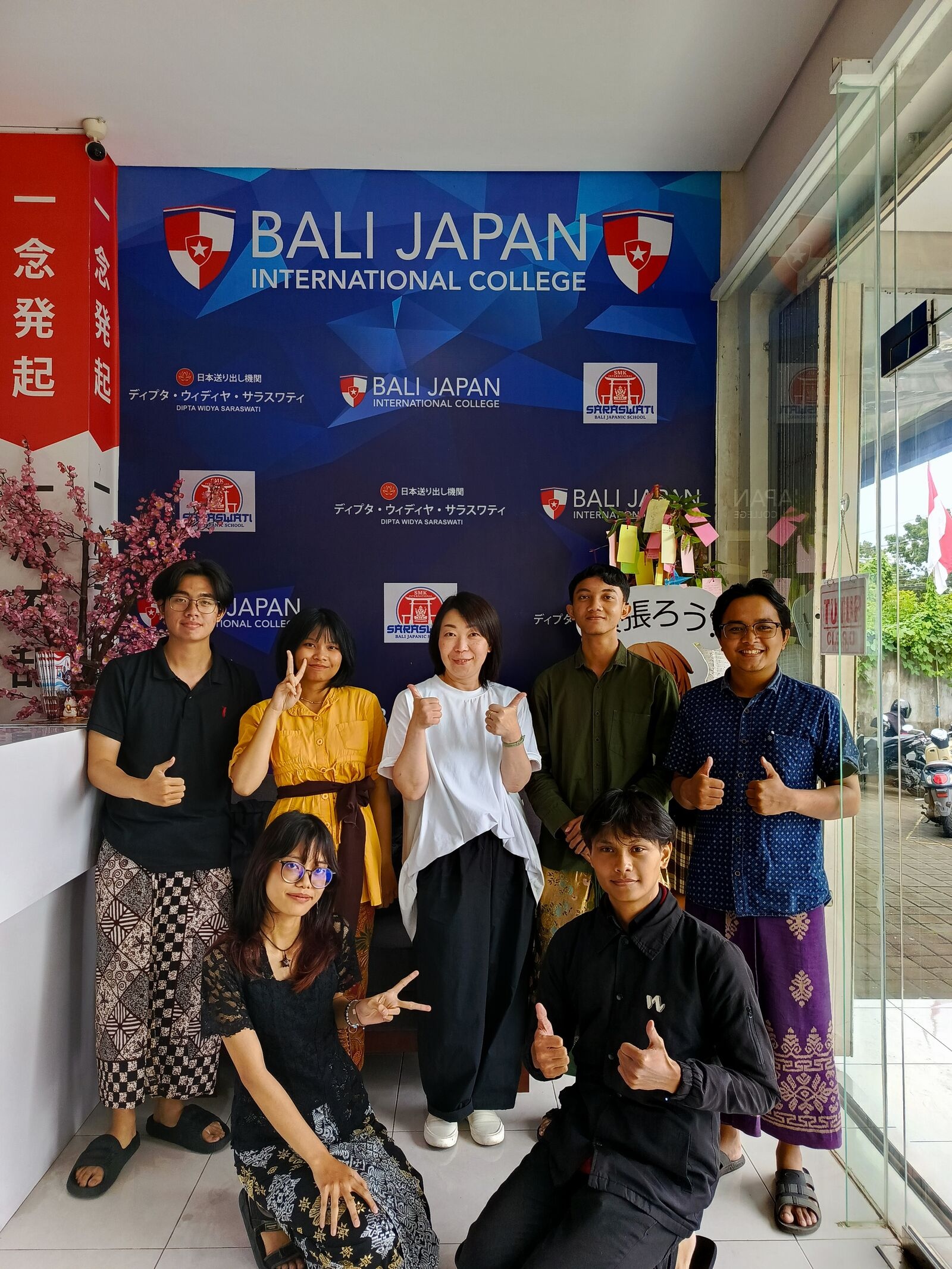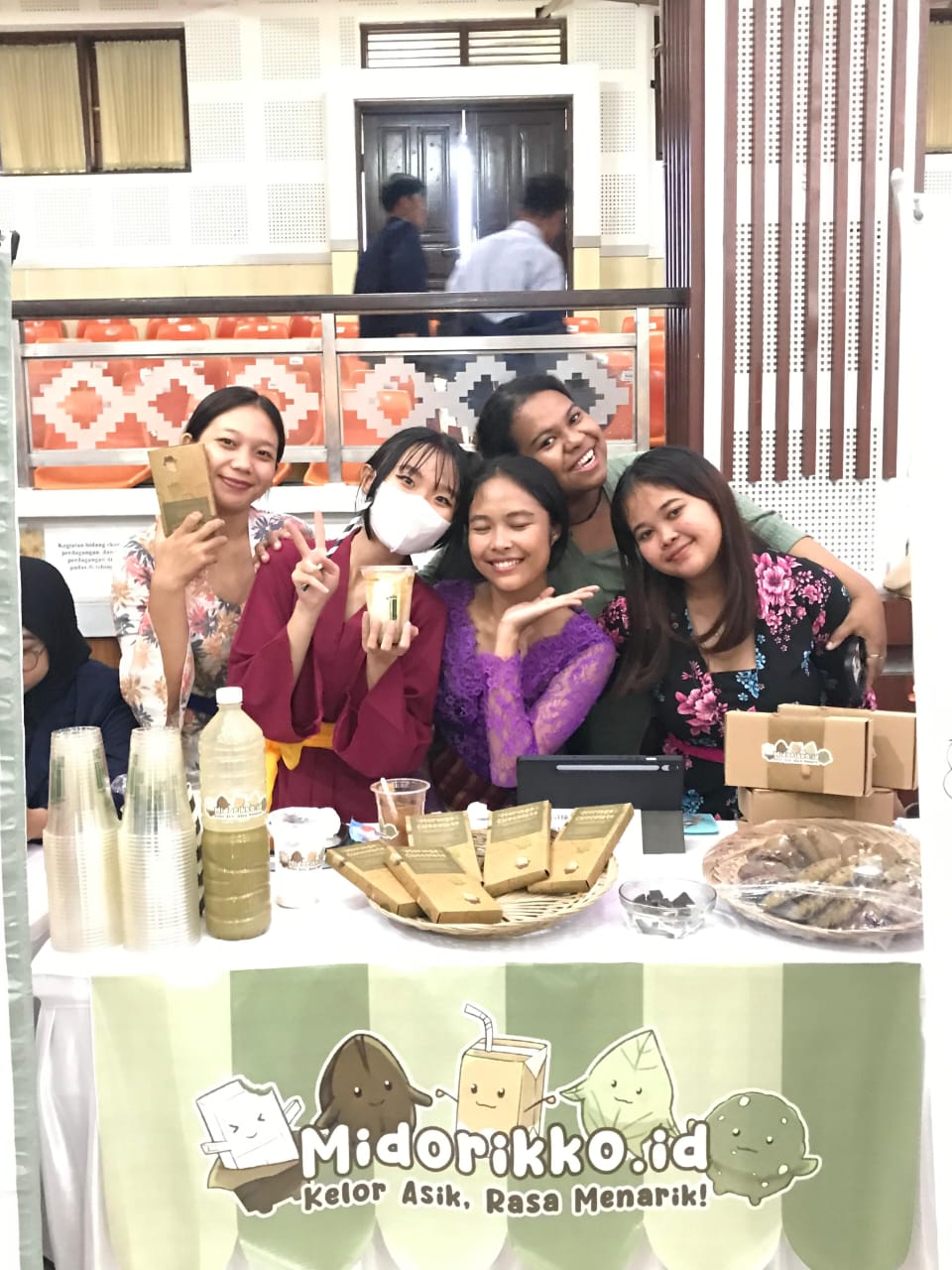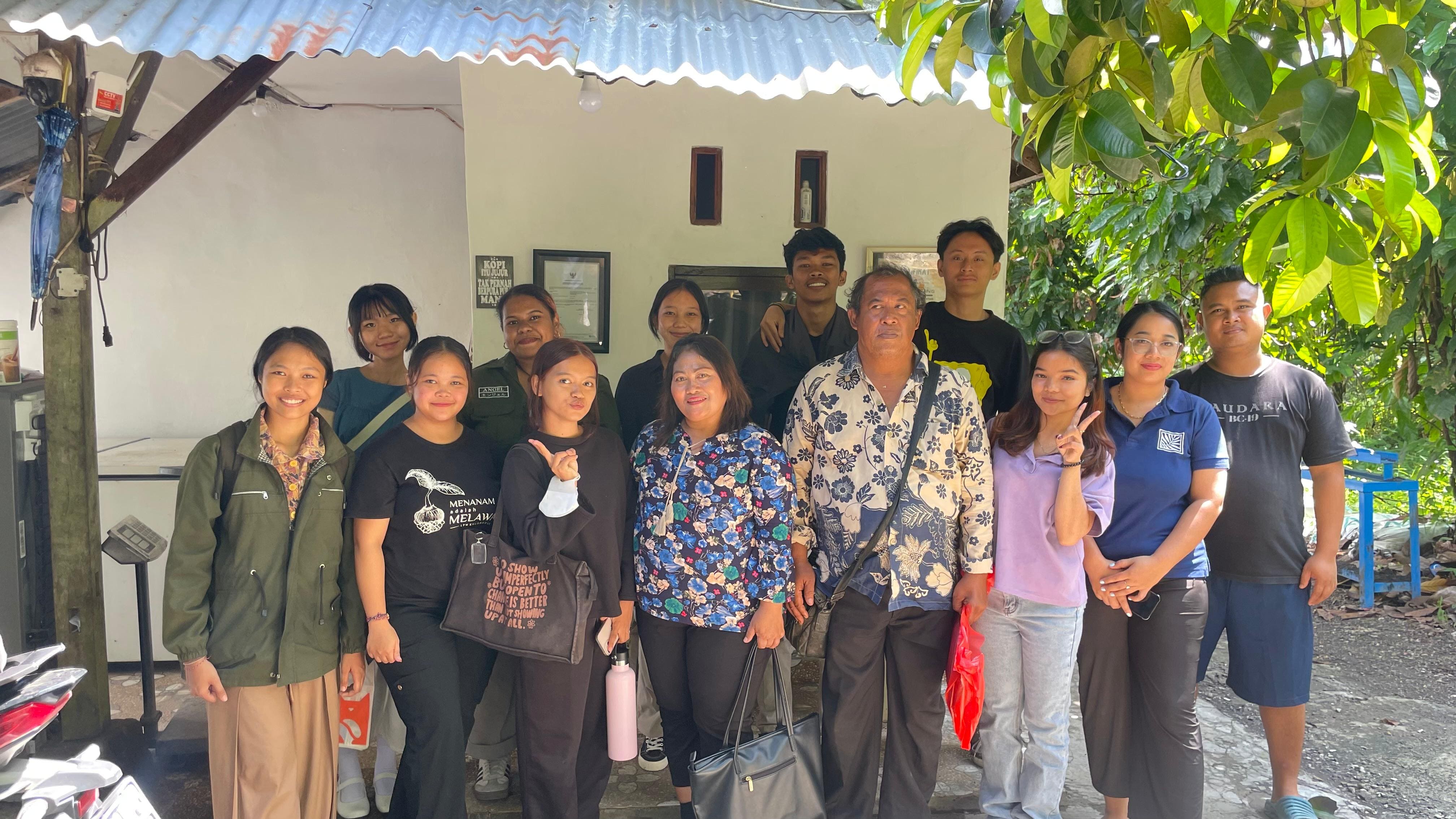Japanese Language and Culture Training Students in Japan 18 September 2014-25 August 2015
Name : Ni Gusti Putu Wahyu Dianti
ID : 1101705032
About the Program
This program is held in collaboration with Udayana University's Japanese Literature University with Kobe Woman University and the scholarship is supported by the Japanese Education and Culture Office (Monbukagakusho). This program is a one-year study program in Japan at Kobe Woman University, and one student from Udayana University Japanese Literature is sent.
In addition, there is also a collaboration between the Faculty of Medicine, Udayana University and Kobe Woman University in the form of sending 2 students from the Department of Nursing, Faculty of Medicine, Udayana University to Kobe Woman University in October to conduct a 2-week comparative study. Therefore, the welcoming ceremony was held simultaneously on October 23, 2014.
Lesson
During one year the study period is divided into two semesters. I entered the Department of Japanese Literature, but as a foreign student I was free to choose any subject even though it was not in accordance with my major. There are many majors at Kobe Woman University including, majoring in English, Japanese, majoring in design and others. Thus, as foreign students we can also study subjects from other majors. Two semesters in Japan are divided into odd and even semesters. Because I arrived in Japan in September, I started my studies from the even semester. Before deciding which courses to take for one semester, there is a one week trial period for the courses. After the first week, the real class begins. Here are the courses I take per semester.
Even Semester
During the even semester, I took 10 courses. I took more courses in the even semesters than in the odd semesters. Here are the even semester courses that I took:
Badminton (Sport) Japanese II
Today's Society V Japanese IV
Introduction to Japanese II Japanese Literature Practice (Seminar) II-ii
Classical Performing Arts II History of Folk Culture II
TOEFL/TOEIC Training VI
Fashion Training (Yukata Making Lesson)
The courses I took in the even semesters came from various majors. For example, the Fashion Training course (Yukata Making Lesson) is a course from the designer department, TOEFL/TOEIC Training VI is a course from the English department. Japanese Language II and Japanese IV courses are courses specially held for foreign students. In this course there are two foreign students from China who are also taking this course. So, in the class there are only three foreign students with one teacher.
III
During the lecture of Today's Society V, I had the opportunity to make a presentation about the big ceremony in Bali. Both the lecturers and students seemed happy to listen to my presentation, there were even some students who asked questions about Bali when I gave a presentation. In addition, the yukata sewing lesson is no less interesting. Before the lecture begins, students buy fabrics that are lined up in the classroom, so that we are free to choose our own favorite motifs and colors. From the beginning until the yukata is ready to wear, everything is sewn by hand without the aid of a machine. Not only learning to sew a yukata in this course, we are also taught how to wear the yukata yourself. It's an unforgettable experience.
Odd semester
In the odd semester, I started attending seminars to write a thesis. Therefore, I only took seven courses, namely:
Japanese I Japanese III
Japanese Literature Practice (Seminar) II-ii History of Folk Culture I
Oral Presentation III Bunpo I
Child Health III
In Child Health III lectures, many practices are carried out. We are taught how to take care of children from babies to children. Many discussions, practices and presentations were held in the lectures, which made the lectures more enjoyable. Besides that, attending lectures from other majors also added my friends.
Cultural Experience
During my year in Japan, I went through the four seasons namely spring, summer, autumn and winter. Each season has its own charm and uniqueness. Being able to experience the four seasons in Japan was a very valuable experience for me. I arrived in Japan in the fall. The air is very clean, cool, and pleasant.
I only felt autumn for a while, when the air had started to cool and entered the winter season. When the air gets cold, there is a festival celebrated on campus called bunkasai. Not much different from the D'Javu we have at Udayana Japanese Literature, bunkasai there also features various performances, cosplay, and many food stands created by students' creativity. I tried one stand which is a stand that sells macha. Macha is the original Japanese green tea and Kyoto macha is the best known. I was taught how to enjoy tea in Japan, from how to sit, how to drink, and I was even taught how to make it too. Very impressive. Besides bunkasai, another interesting thing is the celebration of the end and the beginning of the year or what is called nenmatsu – shinnen. At the end of the year I was invited by a hostel friend to spend time in his hometown of Shimane. Shimane is a village, where there are still many rice fields, green mountains and vacant land. While staying at his house, on December 31, 2014 I was invited to Otera to perform a ritual called Joya No Kane, where in Otera we queue for our turn to hit the bell and say a wish. In addition, I also had the opportunity to taste a Japanese New Year's dish called osechi ryori, then in the afternoon we, my family and friends went to the temple to do hatsu mode, the first prayer in the new year. Not only praying I also took the time to buy amulets of safety and good luck at the temple. It didn't stop there, after returning from the shrine my friend and I got a new year's gift, an envelope filled with money called an otoshidama. The next day, before returning to Kobe, I was invited to arrange the room and dolls in preparation for the Hina Matsuri which will come in March. I feel very lucky to be able to experience the Japanese-style end of year and new year celebrations.
When spring comes, many cherry blossoms bloom. Many couples and families have picnics in parks or other places filled with cherry blossoms. Meanwhile, I did hanami on campus, because there were also many cherry blossoms on campus which were no less beautiful than other places.
As spring passes, summer comes. Around the end of June the air began to feel stuffy and it almost rained every day. From late July to August there are many festivals. I took part in an interesting festival at the Hachiman Sama Shrine in Itayado. I participated in working on the omikoshi by wearing a blue Happi shirt and wearing a safety talisman. Besides celebrating the festival at the temple, I also had the opportunity to take part in the obon and hanabi taikai celebrations at the port of Kobe. I wore a yukata that I had sewn myself, and joined in the dancing during the obon celebration. The obon stage consists of three stages, the top stage is where the singers are, the second and third stage is the place for the obon dancers, most of whom are elderly. In addition to the dancers, visitors, both domestic and foreign, can also participate in dancing. Very pleasant experience.
Gathering Event
In mid-August, I attended a gathering of all Japanese students, both Japanese and foreign students. The total of all participants at that time was 42 people. Many participants from abroad participated. There are from Thailand, Vietnam, China and others which are dominated by people from East Asia. The activity lasted for three days. Many intimate activities are arranged by the committee, such as cooking together, exercising together, playing games, bonfires, and others. My favorite day is the last day which is bonfire and group discussion. In group discussions, I could hear many stories from various countries. For example about culture, the character of people in general, mindset, social, and education. The participants get to know each other very easily, they are very friendly and welcoming. Three days of camping with the people we meet for the first time is one way to train our socialization to be able to familiarize ourselves and make as many friends as possible.
Find a job
Spring break is quite long, about two weeks. In addition to traveling to several cities in Japan, this vacation I filled with adding experience in the field of looking for work. Uniquely, people in Japan look for work before they graduate from college, namely at the end of the third year or the beginning of the fourth year. First I wore a black and white shirt suit with black shoes and my hair was neatly tied. The company seminar this time was held in Kyoto so it wasn't too far from where I live in Kobe. In this seminar, various large companies were presented as resource persons such as Panasonic, Fujitsu, Toshiba, Honda, and others. After listening to the seminars of each company, we filled out a complete form with data
self. This seminar can only be attended by foreign students who are currently studying in Japan. Besides getting knowledge about the company, they also explained the system of recruiting employees and the most important thing from attending events like this for me was making friends.
It's a very fun and interesting experience to be able to experience education in Japan. During the year I gained a lot of experience and also made many new friends from various countries with different characters. Even though I am alone and sometimes miss my family and friends in Bali, I can still treat it with various activities in Japan, besides that I also have very good friends so that they have become my own family. I sincerely thank you for the Japanese Literature Study Program, Kobe Woman University and especially Anita Sensei, Tuti Sensei, and Yasuhara Sensei.



UDAYANA UNIVERSITY